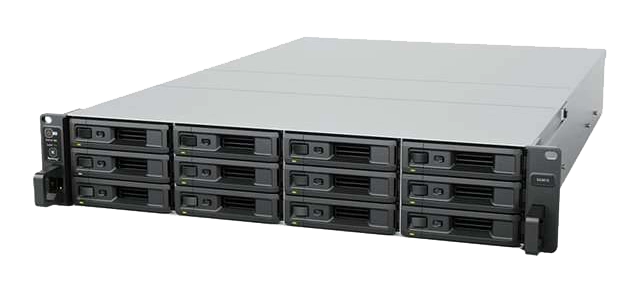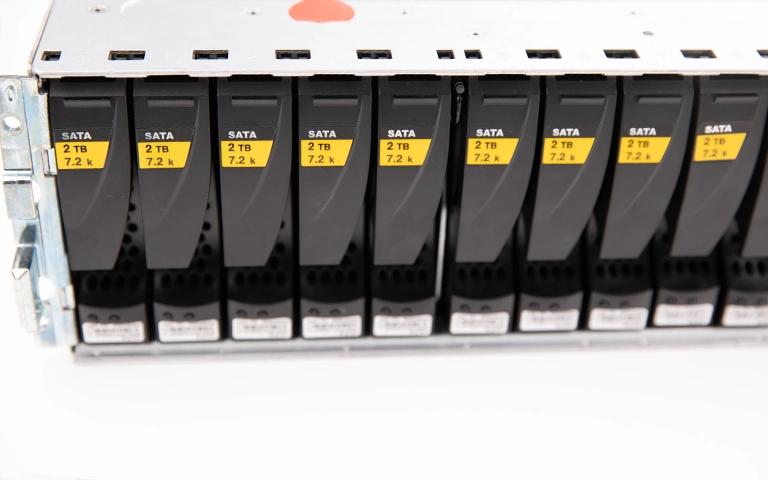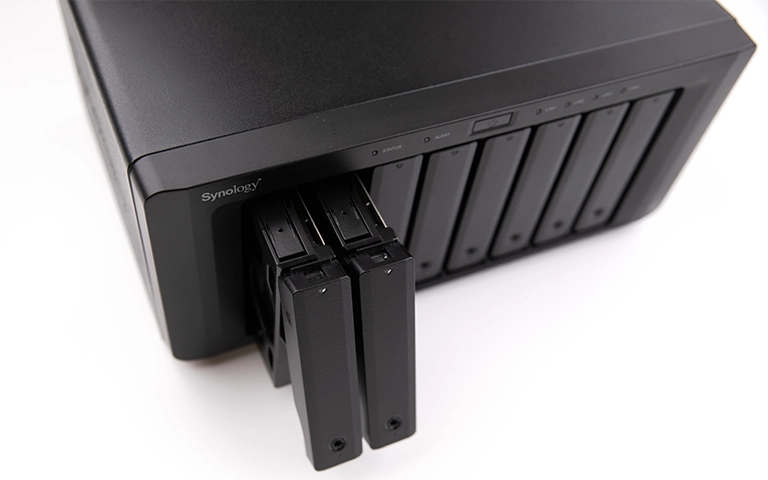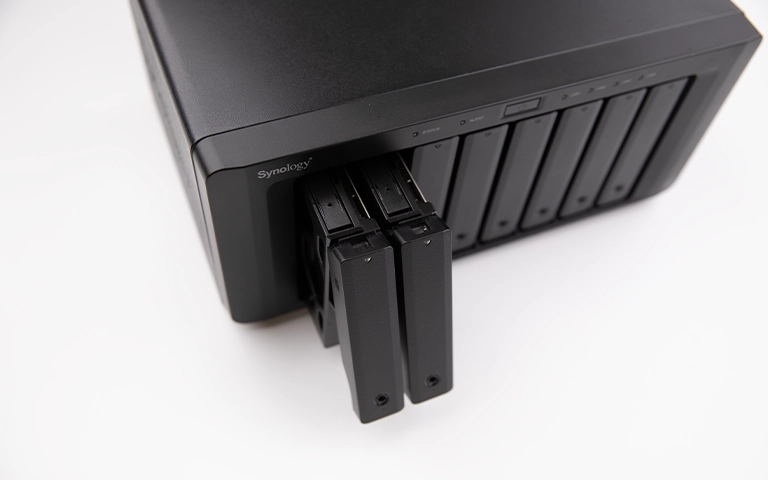Storage systems are the backbone of modern IT environments. Two common types, Direct Attached Storage (DAS) and Storage Area Network (SAN), often cause confusion. Both store and manage data but differ in structure, scalability, and performance.
DAS connects directly to a server or computer, offering simplicity and lower costs. SAN uses a dedicated network to link multiple storage devices, making it ideal for larger enterprises.
Knowing the difference between DAS and SAN helps you choose the right system for your business.
In this post, we’ll explain how they work, compare their strengths, and discuss how RAID Recovery Services can help when data loss occurs.

Fast turnaround times for business-critical data
What is DAS (Direct Attached Storage)?
Direct Attached Storage (DAS) refers to a storage device directly connected to a single computer or server without a network in between.
Common examples include internal hard drives, external drives, and RAID arrays linked through SATA, SAS, or USB interfaces.
DAS is known for its simplicity and speed. Since the connection is direct, data transfer rates are usually faster and more consistent compared to network-based systems. It’s often used in small businesses or individual servers that don’t require shared access.
However, DAS has limitations in scalability and collaboration. Data stored on one device can only be accessed by the connected system, making it less suitable for organizations with multiple users or large-scale operations.

What is SAN (Storage Area Network)?
Storage Area Network (SAN) is a high-speed network that connects multiple servers to shared storage devices.
It allows centralized data access, enabling different systems to use the same storage resources simultaneously. SANs are commonly built using Fibre Channel or iSCSI connections, offering both performance and reliability.
Unlike DAS, SAN provides scalability and flexibility. You can expand storage capacity or connect additional servers without disrupting existing operations. This makes SAN ideal for enterprises, data centers, and organizations managing critical databases or virtualized environments.
A well-designed SAN improves uptime and simplifies backup management but comes with higher setup and maintenance costs. It also requires skilled administrators to manage network performance and data flow effectively.
To explore another network-based setup, read our guide on NAS vs SAN and learn how network-attached storage compares in accessibility and cost.

DAS vs SAN: A Detailed Comparison
To help you clearly see how these two storage types differ, here’s a simple comparison of their main features.
For more insights on data organization and storage performance, see JBOD vs RAID.
Data Recovery Challenges for DAS and SAN Systems
When data loss occurs, both DAS and SAN systems present unique recovery challenges. The type of connection, storage structure, and file system all affect how recovery is handled.
For DAS, issues often involve failed drives, controller errors, or accidental deletion. Since the storage is connected directly to one system, recovery usually requires accessing the physical drive or RAID array.
For SAN, failures can be more complex. Problems might stem from network disruptions, corrupted LUNs, or RAID controller issues within shared storage.
In many cases, recovery must address both hardware and network-level faults before data can be extracted.
At RAID Recovery Services, we specialize in restoring data from both environments. Our engineers handle damaged drives, RAID failures, and logical corruption with precise diagnostics and recovery tools.
To learn more about addressing complex system errors, visit our guide on Troubleshoot RAID Failure or see how we manage RAID Controller Failure Recovery cases.

Which Storage Solution is Right for You?
The right choice between DAS and SAN depends on your organization’s scale, data usage, and budget.
Choose DAS if you run a small business or need fast, local access to data without complex management. It’s cost-effective and simple to maintain but limited in scalability.
Choose SAN if your infrastructure supports multiple servers, virtual machines, or large databases. SAN provides centralized control, faster data access, and easier growth for expanding businesses.
When making your decision, also consider long-term maintenance and disaster recovery strategies. No matter which system you use, unexpected failures can lead to serious downtime and data loss.
If your DAS or SAN setup experiences failure, our team can help. RAID Recovery Services provides expert recovery solutions for enterprise storage systems, ensuring minimal disruption and maximum data integrity.
For more on enterprise-level storage, read our article on Enterprise NAS Storage.

Trust the experts with proven results
Frequently Asked Questions
What is the main difference between DAS and SAN?
The key difference lies in connectivity. DAS connects directly to one server or computer, while SAN uses a dedicated network to connect multiple servers to shared storage. SAN offers better scalability and centralized management, while DAS is simpler and cheaper.
Is SAN faster than DAS?
In multi-server environments, SAN is generally faster due to high-speed Fibre Channel or iSCSI connections. However, for single-system setups, DAS can deliver excellent speed since it operates through a direct connection without network latency.
Can I recover data from a failed SAN or DAS system?
Yes. Both storage types can be recovered by professionals. At RAID Recovery Services, our engineers specialize in restoring data from failed drives, damaged controllers, or corrupted arrays in both SAN and DAS systems.
Which is better for small businesses, DAS or SAN?
DAS is often the better option for small businesses that need local storage at lower cost. SAN is ideal for medium to large organizations that require scalability, shared access, and centralized management.
What should I do if my DAS or SAN fails?
Avoid attempting to rebuild or reformat the storage. Disconnect it safely and contact a professional recovery company. RAID Recovery Services offers secure diagnostics and recovery for both DAS and SAN failures.